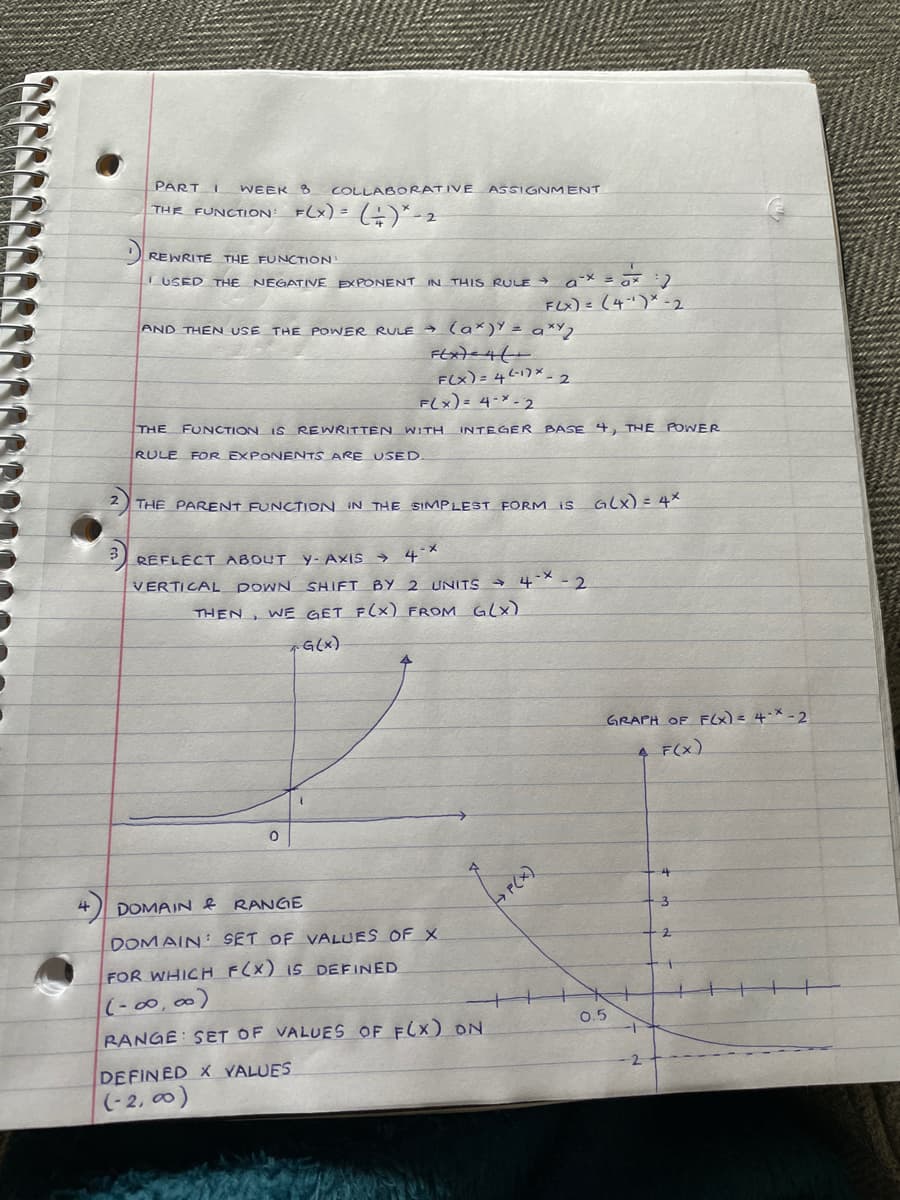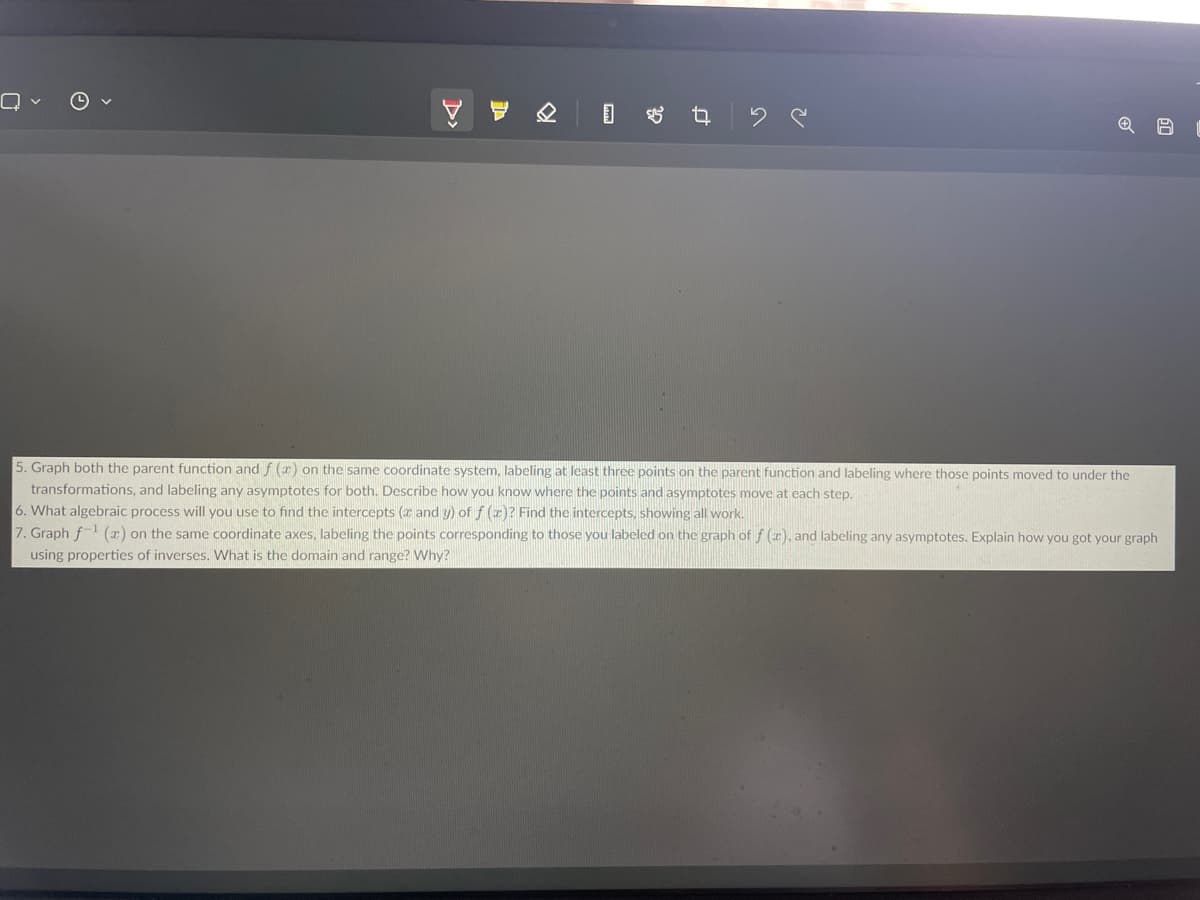Graph both the parent function and f (r) on the same coordinate system, labeling at least three points on the parent function and labeling where those points moved to under the transformations, and labeling any asymptotes for both. Describe how you know where the points and asymptotes move at cach step.
Graph both the parent function and f (r) on the same coordinate system, labeling at least three points on the parent function and labeling where those points moved to under the transformations, and labeling any asymptotes for both. Describe how you know where the points and asymptotes move at cach step.
Algebra & Trigonometry with Analytic Geometry
13th Edition
ISBN:9781133382119
Author:Swokowski
Publisher:Swokowski
Chapter1: Fundamental Concepts Of Algebra
Section1.4: Fractional Expressions
Problem 83E
Related questions
Question
i need number 5, the equation im using: f(x) = 4^x - 2

Transcribed Image Text:PART I
WEEK
COLLABORATIVE ASSIGNMENT
THE FUNCTION
FLx) = ÷)*-2
REWRITE THE FUNCTION
IUSED THE NEGATIVE EXPONENT IN THIS RULE
FLX) = (4")* -2.
AND THEN USE THE POWER RULE → (a*)Y = a*Y,
FLx) = 461)*_ 2
F(x)= 4-* - 2
THE FUNCTION IS REWRITTEN WITH
INTEGER BASE 4, THE POWER
RULE FOR EXPONENTS ARE USED
THE PARENT FUNCTION IN THE SIMPLEST FORM is Glx) = 4*
REFLECT ABOUT y- AxIs > 4*
VERTICAL DOWN SHIFT BY 2 UNITS → 4*
-2
THEN , WE GET F(X) FROM GLx)
G(x)
GRAPH OF FLx)= 4.X-2
4 F(x)
i4
DOMAIN & RANGE
DOMAIN SET OF VALUES OF X
FOR WHICH F(X) 15 DEFINED
(-00,00)
0.5
RANGE: SET OF VALUES OF FLX) ON
DEFINED X YALUES
(-2, 0)

Transcribed Image Text:5. Graph both the parent function and f (x) on the same coordinate system, labeling at least three points on the parent function and labeling where those points moved to under the
transformations, and labeling any asymptotes for both. Describe how you know where the points and asymptotes move at each step.
6. What algebraic process will you use to find the intercepts (a and y) of f (x)? Find the intercepts, showing all work.
7. Graph f-1 (x) on the same coordinate axes, labeling the points corresponding to those you labeled on the graph of f (x), and labeling any asymptotes. Explain how you got your graph
using properties of inverses. What is the domain and range? Why?
Expert Solution
This question has been solved!
Explore an expertly crafted, step-by-step solution for a thorough understanding of key concepts.
Step by step
Solved in 2 steps with 3 images

Recommended textbooks for you

Algebra & Trigonometry with Analytic Geometry
Algebra
ISBN:
9781133382119
Author:
Swokowski
Publisher:
Cengage

Algebra & Trigonometry with Analytic Geometry
Algebra
ISBN:
9781133382119
Author:
Swokowski
Publisher:
Cengage